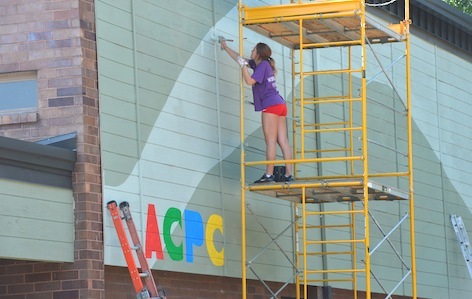 Build elevation, recently painted 10 years ago, should get a new coating. Made in 1955 r. rapped plaster with medium graining does not show any damage, but on the smoothly obliterated pilaster strips, hairline scratches are visible. It was therefore necessary to repair the plaster on these surfaces by a bricklayer. The repaired plasters were dried. The old coating was made of silicate paint. Please list the necessary tasks in order
Build elevation, recently painted 10 years ago, should get a new coating. Made in 1955 r. rapped plaster with medium graining does not show any damage, but on the smoothly obliterated pilaster strips, hairline scratches are visible. It was therefore necessary to repair the plaster on these surfaces by a bricklayer. The repaired plasters were dried. The old coating was made of silicate paint. Please list the necessary tasks in order
The sequence of works on painting the facade is as follows:
1) Scaffolding:
– setting up the wall scaffolding;
– maintenance of scaffolding during painting works;
– scaffolding demolition.
2) Painting rap plaster:
– cleaning the wall with hot water under high pressure;
– repairing minor damage to the plaster using mortar of a similar type and maintaining the same plaster structure;
– priming the entire surface with varnish;
– painting with silicate paint slightly diluted with varnish;
– topcoat with silicate paint.
3) Smooth plaster painting:
– cleaning the wall with hot water under pressure;
– repairing minor damage with a similar type of mortar;
– etching the repaired plasters;
– priming with varnish, diluted with water, depending on the absorbency of the substrate;
– painting with silicate paint, diluted with varnish depending on the absorption of the substrate;
– topcoat with silicate paint.
Silicate dispersion paint can also be used here. However, because the old coating was made of silicate paint, it is not necessary to use silicate dispersion paint. Dispersion paints are less suitable in this case.